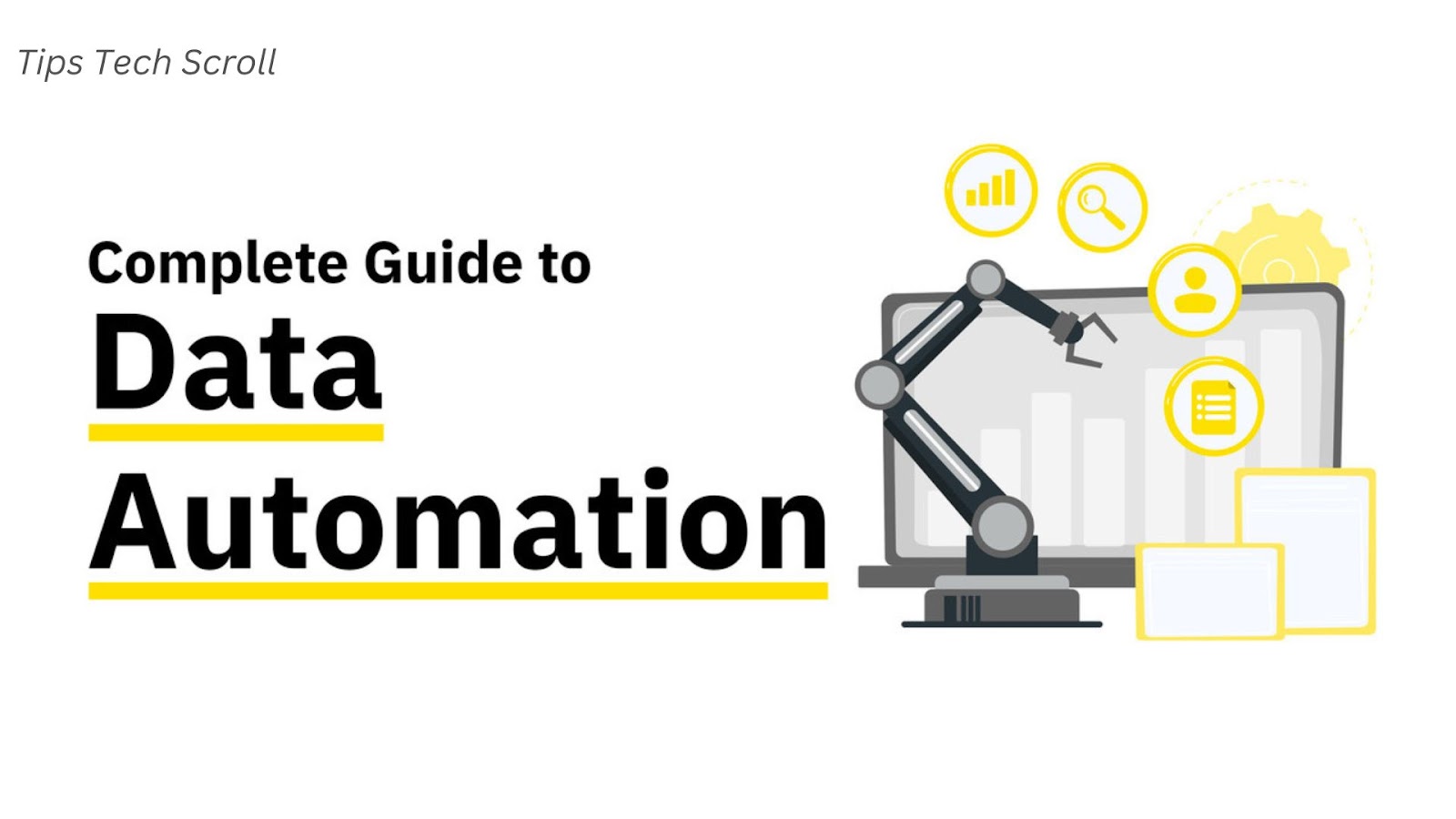Data automation is a critical component in the ever-changing digital innovation environment. It has become necessary for company productivity and revolutionary developments. Data automation has a long history, dating back to the beginnings of computing.
It looks into what data automation looks like in the present era. Its main emphasis is on methodical execution strategies for efficient data automation. It emphasizes how crucial visibility is to data automation. It also emphasizes how important simplicity is when developing and overseeing workflows for data automation.
History of Data Automation
Data automation has its origins in the early years of computers. Simple repetitive tasks were automatic during this period to improve overall productivity. Advances in technology were essential in the development of data automation. A significant turning point was the creation of databases and structured query languages (SQL). Higher-level data management and automation solutions were made possible by these developments.
Artificial intelligence (AI) and machine learning indicated a shift in data automation. Algorithms changed and became capable of calculating patterns from data. With this additional strength, algorithms may now automate decision-making procedures. Through machine learning and AI, complicated tasks have been made more efficient.
What is Data Automation?
The strategy to manage data is data automation. It is growing more frequent by the day. With data automation, an organization can use technology to upload, transform, gather, store, analyze, and process data without human assistance.
Businesses can now optimize the value of their data through data automation. By the automation of repetitive and time-consuming tasks, it simplifies and speeds up decision-making processes.
This strategy guarantees that businesses may quickly gain valuable information from their data. Routine tasks no longer require human involvement due to automated operations, which increase productivity. Employees may focus on more creative and strategic aspects of their jobs when they are free of the stress of routine duties. Data automation essentially acts as a catalyst to increase productivity and efficient operations in the business world,
Benefits of Data Automation
Data automation offers the following benefits.
Enhanced data quality
An organization has the risk of human mistakes when handling massive amounts of data manually. Data automation lowers the risk of human error by guaranteeing that data is loaded.
Less Expensive
Using computer resources for data analysis is frequently less expensive than paying workers for their time.
Enhanced analytics speed
It could be challenging and time-consuming for humans to process that much data, but computers can do it conveniently. After that, data may be verified and defined before being added to a single system.
Enhanced productivity
Employee time and effort spent on repetitive work has decreased due to automation, which makes it possible to process and analyze data faster.
Improved capacity to produce insights
Data engineers may focus on more productive duties, including gaining insights, instead of cleaning data. That is due to implementing an appropriate data automation approach.
Faster Time to Market
Automation speeds up procedures in sectors like marketing and product development. The time it takes to introduce goods or services to the market has shortened due to it. For businesses, the faster pace becomes a central competitive advantage.
Customer Satisfaction
Automation is vital to customer service methods, including technologies (chatbots and automated responses). Automated technology ensures faster and more responsive client interactions. Overall levels of consumer satisfaction rise as a result.
Limitations of Data Automation
Although data automation offers multiple benefits, there may be limitations. The following are some limitations of data automation.
Cost of early expenditure
Here are frequently upfront expenses or subscription fees associated with implementing data automation tools or systems. On the other hand, setting up data automation will eventually save an organization money.
Team role evolution
Data engineers can focus on more significant work when they are free from the burden of repetitive tasks. Workers who had previously concentrated on these kinds of duties can discover more. They will understand that their responsibilities extend.
Learning curve
There is frequently a learning curve when introducing new tools or technologies. The same holds for data automation. The familiarization and optimal utilization of data automation solutions by staff may require some time.
Need of Human Involvement
Even though data automation can minimize laborious tasks and speed up data integration, crucial workflow operations might still demand human involvement. For instance, human involvement is necessary to determine what went wrong and how to fix the problem.
Strategies of Data Automation
Set Specific Objectives
- Gives a clear description of the aims and purposes of your data automation projects
- Determine which particular jobs or processes, when aligned with overarching corporate objectives, can be automated
Thorough Preparation
- Create a thorough plan that outlines the steps involved in implementing data automation
- Think about integrating automation technologies with current workflows and systems
Assurance of Data Quality
- Make data quality a top priority to guarantee accurate and trustworthy automation results
- Create procedures for data management and put policies in place for data cleansing and verification.
Choose the Right Tools
- Select automation solutions in line with the goals and requirements of your company
- Take into account elements like ease of integration, compatibility with current systems, and scalability
Aspects of Scalability
- Scalability is necessary while designing automation solutions to meet the expanding demands of the company
- Ensure that automation procedures can adjust to variations in the volume and complexity of data
Collaboration Across Departments
- Encourage departmental cooperation to find chances for cross-functional automation
- Promote knowledge-sharing and communication among staff members to fully utilize the advantages of automation
Constant Enhancement
- Evaluate the success of data automation techniques regularly
- Automated workflows can be improved and optimized over time by implementing strategies for continuous improvement
Observance and Guidelines Compliance
- Make sure automated processes follow compliance standards and industry rules
- Keep up with any regulatory changes that might affect data automation procedures
Data Automation Tools
Scalability
The data automation solution must be able to scale quickly to meet the growing demands of data processing.
Security
The product should contain robust safety features such as encryption, access control, authentication, and auditing.
Integration
Integration is a pivotal criterion for a proficient data automation tool. The tool should seamlessly interface with various data tools and systems. It includes compatibility with data warehouses, data lakes, analytics platforms, and visualization tools.
Versatility in connectivity ensures the tool’s adaptability across diverse data-related environments. This capability is essential for enabling comprehensive end-to-end data automation workflows. Furthermore, the tool should exhibit adaptability to various data sources, formats, and workflows, ensuring flexibility.
Observability
Observability stands out as a crucial aspect of effective data automation tools. It involves logging and monitoring capabilities. These are instrumental in maintaining data integrity and accuracy. Additionally, a robust observability feature plays a leading role in facilitating prompt troubleshooting when issues arise. This attribute is indispensable for ensuring a streamlined and error-free data automation process.
Simpleness of use
Without requiring complex coding or technical knowledge, the solution should make it simple for users to create, design, and manage data automation workflows.

FAQs
What are the business consequences of data automation?
Businesses benefit from data automation. It increases operational effectiveness, accelerates decision-making, lowers costs, and promotes innovation. It makes it possible for businesses to use data more wisely and strategically.
What are some well-liked tools for data automation?
AWS Glue, Tableau, UiPath, Talend, Apache NiFi, and many more are popular tools for data automation. The intricacy of the automated activities, particular company goals, and data integration specifications all influence the tool selection.
What is the future of Data Automation?
The future of data automation will require further integration with modern technologies such as artificial intelligence and machine learning. Automation tools are predicted to grow more intelligent, adaptable, and capable of managing increasingly complicated tasks, resulting in additional breakthroughs across industries.
Conclusion
Data automation emerges as a transformational force that is altering sectors. It improves efficiency by streamlining operations to ensure optimal performance. Data automation helps to improve decision-making processes. It acts as a catalyst for promoting innovation within organizations.
Organizations continue to incorporate advanced technologies into their operations. The future of data automation promises increased adaptability and intelligence. Embracing these technological improvements is critical for maintaining competitiveness. In a continually changing landscape, efficient data exploitation remains critical to success.

Greetings! I’m jordan, the proud Owner of Tipstechscroll. With 7 years of experience in SEO, I’m passionate about aiding businesses in their online growth journey. My expertise lies in crafting content that resonates with search engines while ensuring visibility to the intended audience. By staying abreast of the ever-evolving SEO landscape, I alleviate the burden for my clients, ensuring their online presence remains optimized. My goal is to impart my knowledge and empower others to thrive in the digital realm.

